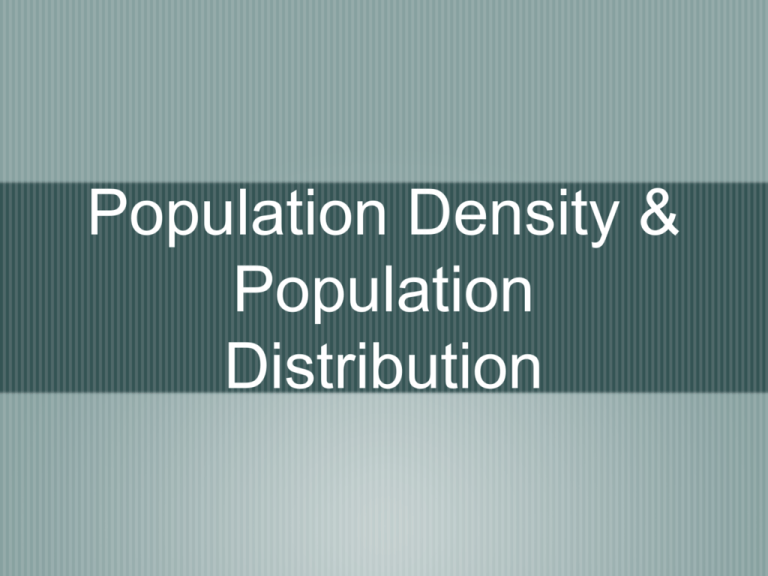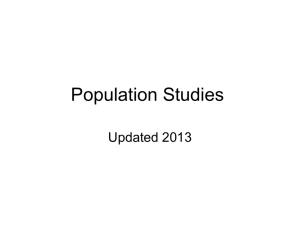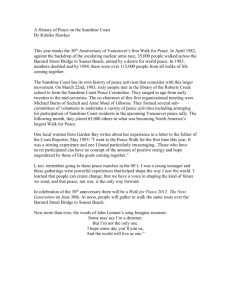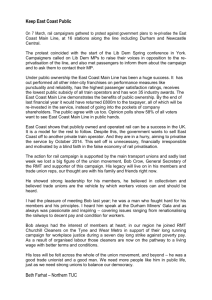Population, sec 2, 2013, set B
advertisement

Population Density & Population Distribution Population Density Which photograph has a high population density? Population Density = Total number of people per unit area of land Calculation of Population Density Total resident in 1997 = 3736700 Total land area = 647.8 sq km Pop density = 5768 persons per sq km Population Density Canada – 3 people per sq km Bangladesh – 1042 people per sq km Singapore – 6000 people per sq km http://www.photius.com/wfb1999/rankings/population_density_2.html ACE activity Research on the factors affecting population density in Singapore or Hong Kong. How does Singapore or Hong Kong cope with high population density? Population Distribution The way people are spread out over an area of land www.countrywatch.com/facts/facts_default.aspx... Factors Affecting Population Distribution and Population Density Relief Climate Soils Mineral and energy deposits Accessibility Population Distribution Population is not evenly distributed are found in central and northern part80% of the people live in west coast Areas of high pop density (above 200 persons per sq km) are the major cities such as Kuala Lumpur, Melaka and Johor Bahru Areas of moderate pop density (21 – 200 persons per sq km) are found on the coastal plain on the east coast Areas of low pop density (below 21 persons per sq km) Relief Lowland areas/low reliefs are able to support a dense population Development of settlements, transport, agriculture and industry Central northern part is sparsely populated because it is mountainous Climate West coast more densely populated – sheltered from SW monsoon by Sumatra More evenly distributed rainfall and high temp (25 – 28°C) favour cultivation of crops Sheltered from heavy rain facilitates the growth of trade, market towns and ports East coast is exposed to NE monsoon as it faces South China Sea Heavy and prolonged downpour causes floods and inflict economic Soil Soil on the west coast is generally deep and well-oxidised and is suitable for growing cash crops such as rubber and oil palm Presence of fertile alluvial soil which supports wet rice cultivation Hence, west coast able to support dense population East coast – swampy lowland Mountains in central northern part – poor, thin, stony soil Minerals and Energy deposits Discovery of tin deposits in the west coast (Kinta, Kelang Valley) attracted influx of Chinese immigrants Led to development of roads and railways in the west coast Mining and agricultural activities have led to the development of market towns Many industries have been set up because of the established infrastructure Accessibility West coast is easily accessible by road, rail and air Major ports are developed on the west coast along the sheltered Straits of Malacca, an international sea route Better transportation network on the west coast has speeded economic development and creation of more jobs Central northern part is sparsely populated because of poor accessibility due to steep forested slopes of mountains Describe and account for the population distribution and density in Peninsular Malaysia. • Describe High population density – where? moderate population density – where? Low population density – where? • Account - Factors influencing population distribution Relief Climate Mineral resources Soils Accessibility Pair share Based on a country in Asia locate areas of differing distribution study the factors behind the distribution










